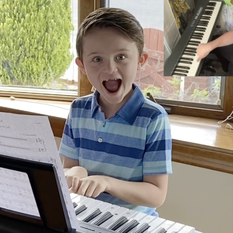 The debate over in-person learning this Fall is in full force. Red and blue counties are at odds with each other, teachers are terrified, parents are confused, not many ask how the kids feel. Virtual learning is presented as a bandaid, an inherently worse and temporary option. Instead of focusing on how to make schools safe - something which seems to be a near impossibility - why aren’t we focusing on how to make virtual education better? We’ve already seen what happens with a frightening consistency to the schools that have reopened. Look at Israel, Beijing. One thousand quarantined in a Georgia district only days in. It’s the “it won’t happen to us” mentality that got us in this mess to begin with. In NYC, indoor dining is canceled for the foreseeable future, but schools are reopening. Are cafeterias not considered indoor dining?
Businesses all over the world have adjusted to this “new normal” and innovated. Even restaurants are getting creative given the restrictions. Street side cafes have popped up all over my neighborhood in Brooklyn making Williamsburg look more like the 11th arrondissement. People are enjoying the cafe’s so much that the mayor announced they will return next summer regardless of the pandemic. Not all is bad about the new normal. In my field of music we’re adapting, innovating and redefining what it means to perform. Musicians are finding new ways to produce content and reach new audiences. Playing in clubs with an audience a la 2019 B.C. - before corona - is not an option so we’ve gotten creative. Technologies are being developed that will allow musicians to perform in real time together virtually. Necessity is the mother of invention. At my company, an in-home music school, we immediately saw the potential benefits and possibilities of virtual learning. Our students now have access to each of my teacher’s individual professional home recording studios, with a limitless supply of software and educational materials at our disposal. We can produce on demand everything from sheet music to practice videos and tutorials, file share them instantly, and then upload them to our student portal for easy access. No more “I lost my sheet music,” no more, “I didn’t know what to practice.” As soon as in-person lessons were ended, we bought extra cameras and boom stands. We can now switch between multiple camera angles as we teach, giving our students views of our hands as we play and of our faces as we speak. By May we noticed how our students were learning faster, practicing more, and bringing more attention and enthusiasm to their lessons. Our annual recital, always the highlight of the year, presented a particular challenge. It’s a much anticipated event where students get to perform at an authentic music venue with our faculty band playing back-up. Rather than advising them to shrug off one more disappointment, I wanted to give our students something even better than what they were used to in a time when they’ve had to do a lot of settling for less. Not just something pandemic better, but actually better. Something that could become a benefit of their new normal. We ended up creating a fully produced music video for each student, most accompanied by a full band, culminating in an epic three hour YouTube premier on a Saturday evening in mid-June. Friends and family were able to tune in from all over the world to hear our students play everything from “Sir Duke” with a full sax section, to Disney songs with four-part vocal harmony, or a full version of “Stairway to Heaven” complete with falsetto vocals. Each video was special. We premiered a surprise rendition of Charlie Chaplin’s “Smile,” performed by about 60 of our young students singing and playing “together” - in the middle of a stay at home order with a curfew. We got resourceful, creative, innovative and nothing was lost. Our first virtual spring recital topped them all. It’s time for schools and other educational institutions to take advantage of the opportunities presented by this tragedy. It’s not time to look backward. Virtual learning will be a permanent part of our future. Why companies like Apple and Microsoft haven’t jumped all over the opportunity is beyond me. Why Skype doesn’t have a “Lesson Mode” or provide different platforms based on age is beyond me. Zoom should let teachers design their classrooms virtually. FaceTime could create specific virtual classroom emojis and filters (and maybe have the ability to turn off face filters just sayin’). Little things would go a long way. Yes, there are many factors to opening schools that go beyond the pedagogical, but this new pedagogy needs to be addressed now. If we can create a vaccine in 6 months we can figure out how to make virtual learning work to our advantage. We’ve been presented with a challenge but also an opportunity. Herbie Hancock often tells a story about a time he played a very wrong chord on stage with Miles Davis. Miles heard the chord and the next thing he played made the chord right. Miles didn’t hear the chord as a mistake, he heard it as an opportunity. Let’s honor all of those who have lost their lives during this tragedy by using it as an opportunity to create a new normal that’s even better than before.
MARA KANNER
8/28/2020 05:55:17 am
Thanks Will Comments are closed.
|
AuthorWill Armstrong is the founder of WillYouLearn. He's a professional pianist with over 20 years of teaching experience. Archives
July 2024
|
Follow us on social! |
|
 RSS Feed
RSS Feed
